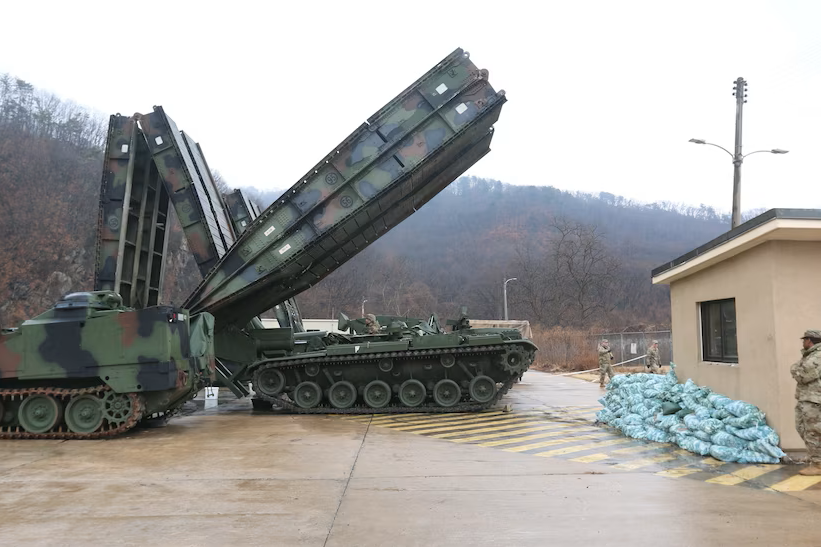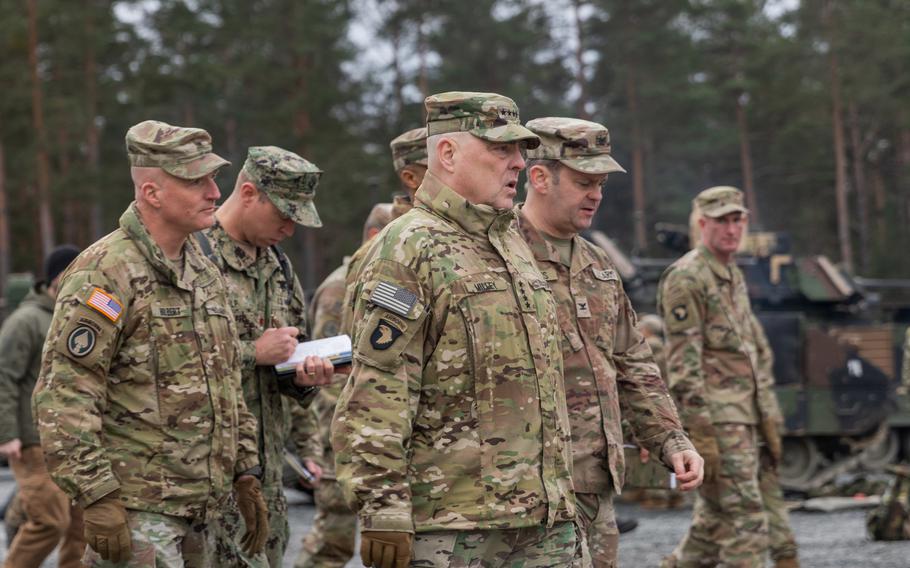
Soldiers assigned to NATO prepare an M2A3 Bradley fighting vehicle to engage targets during a combined arms live-fire exercise at Bemowo Piskie, Poland.
As the Russian invasion of Ukraine enters the second grueling year, the battle for Bakhmut (a city with a prewar population of 70,000) has become critical, bloody and, according to military experts, “strategically significant.” The Washington Post headline, “Russia advances in Bakhmut by sending waves of mercenaries to certain death,” confirms such.
The New York Times puts it this way: “…the battle for the city has created a defining moment of the war for both the Russian and the Ukrainian armies. No longer is the fight about Bakhmut: It is a marathon contest to see which army can break the other.”
The U.S. and its allies continue to support the brave Ukrainian people and its military:
On March 3, the Department of Defense (DoD) announced the U. S. will be transferring military equipment worth up to $400 million to Ukraine. In addition to various ammunition and artillery rounds, the package includes Armored Vehicle Launched Bridges (below) that will enable Ukrainian troops to quickly deploy tanks and other armored vehicles across rivers and other gaps.

According to DOD, more than 54 countries from around the world have pledged more than 1,000 tanks and other armored vehicles.
In the areas of planning, training and logistics the U.S, is also very busy:
NBC News: Two Ukrainian pilots are in the US for training assessment on attack aircraft, including F-16s.
Air Force Times: Joint air operations have expanded into around-the-clock fighter patrols of NATO airspace over Eastern Europe, constant drone surveillance and a growing number of simulated defensive drills with anti-missile systems.
Stars and Stripes: US generals and Ukrainian officers meet in Germany for tabletop war exercise ahead of an anticipated Ukrainian spring offensive.

New York Times: “[In Germany], The U.S. armed forces have trained over 1,000 Ukrainians since January, bringing the total trained since last February to just over 4,000 troops…”
Tensions are rising between the U.S. and China “in the wake of the surveillance balloon saga and Russia’s war in Ukraine,” Those tensions are reflected in, among other, a flurry of exercises, maneuvers and fleet deployments being conducted by the U.S. military with their counterparts in the Indo-Pacific region:
The Associated Press: US, South Korea announce 11-day Freedom Shield, “largest field exercise in 5 years.”
The Hill: US deploys B-52 long-range bomber for joint drill with South Korea. (A U.S. B1-B bomber carried out similar joint exercises a week ago Friday.)
The Japan Times: The Ground Self-Defense Force conducted a landing drill on the island of Tokunoshima on Friday as part of the Iron Fist joint exercise conducted with the U.S. Marines…
Defense News: US, Philippine marines team up to bolster littoral warfare skills. The commandant of the Philippine Marine Corps will tour several U.S. Marine Corps locations with his American counterpart this week, as both services adapt their approaches to defending and fighting from Pacific islands.
.
Military Times: Thailand, US resume Cobra Gold exercises at full scale. Singapore, Japan, Indonesia, South Korea and Malaysia are also full participants in the exercises in which more than 3,800 U.S. troops and 3,000 Thai personnel will participate.
Defense News: The U.S. Marine Corps in March 2022 stood up its 3rd Marine Littoral Regiment, the first of several planned units specifically designed to operate as a stand-in force. These forces would constantly move around the South China Sea and other contested bodies of water, providing a regular presence and intelligence capability while ready to jump into action if tension with China turns into conflict.
Task and Purpose: The U.S. Coast Guard is playing an increasingly important role in the U.S. military’s efforts to protect freedom of navigation and commerce in the Western Pacific amid rising tensions with China. In 2023, the service plans to send three times as many cutters to the Pacific as it did last year…

















